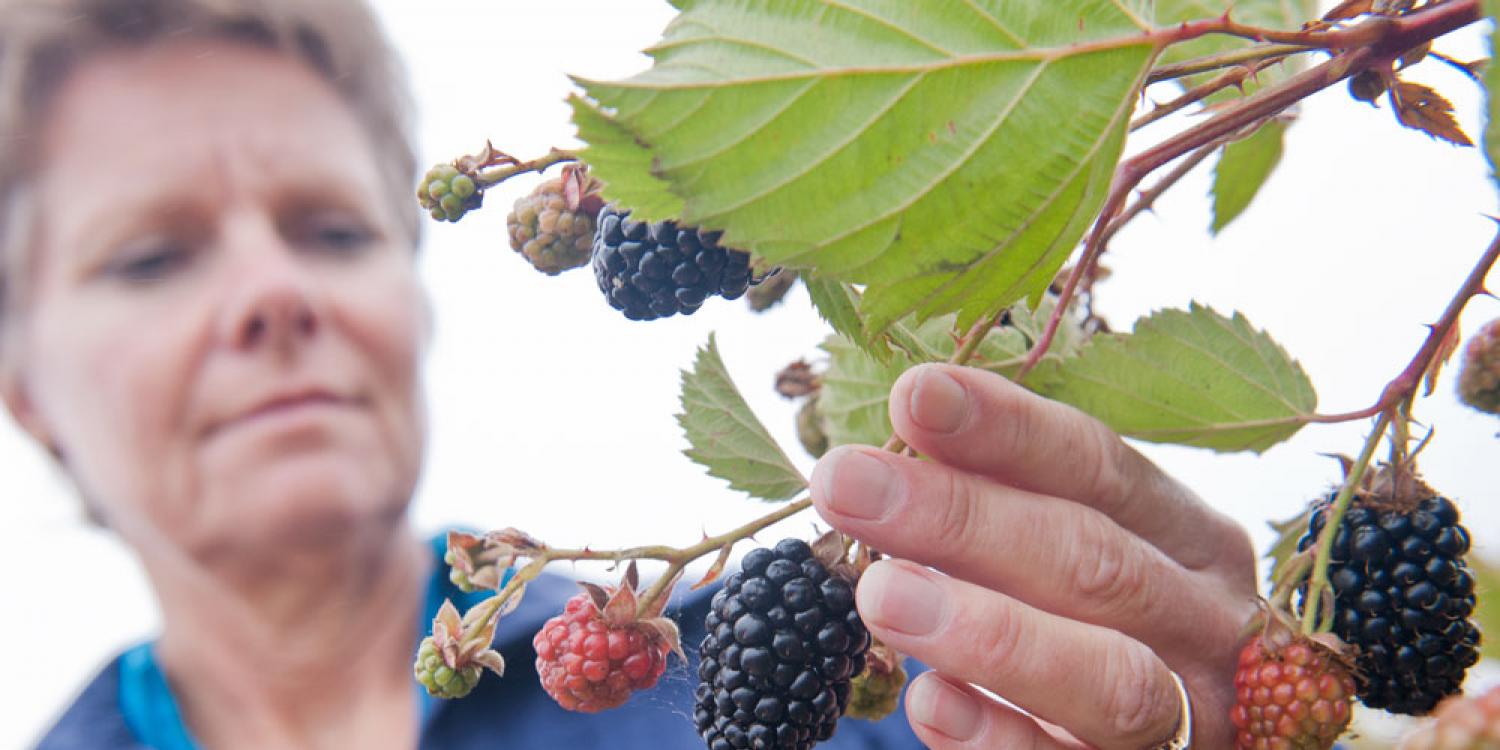
In the late 1990s, Oregon growers had many questions about the best fertilizing methods for blueberry, raspberry, blackberry, strawberry and kiwiberries. Information available focused on typical grower practices and/or research from other regions. With targeted research, Oregon State University Extension Service and the Oregon Agricultural Experiment Station responded by providing growers with information on better nutrient management of those crops.
Nitrogen fertilizer is the key nutrient applied and timing and rates of application can lead to the largest positive and negative impacts on growth and quality. The late Bernadine Strik, then a professor of horticulture and Extension berry crops specialist at the North Willamette Research and Extension Center in Aurora, conducted research projects to trace plant nitrogen fertilizer uptake in strawberry, blueberry, raspberry and blackberry as affected by the rate and the time the fertilizer was applied. She found needs for the different berries differed.
In June-bearing strawberry, fertilization in spring reduced fruit quality and didn’t increase yield, so growers should only fertilize after harvest. In raspberry and blackberry, fertilizer is critical for new primocane growth so making sure fertilizer is applied in early spring is important. In blueberries, fertilizer isn’t taken up by the plant until bloom, so recommendations changed to delay application until then.
Often higher rates of nitrogen didn’t increase yield, adding fertilizer costs and increased risk of nitrogen leaching. Moderate rates were recommended, saving growers up to $300 per acre, with split applications of granular products or fertigation – applying fertilizer mixed in water through drip irrigation – through the spring into early- to mid-summer improved yield and fruit quality. New OSU Extension nutrient management guides were published for growers and home gardeners.
Strik and Amanda Davis, senior faculty research assistant, also looked at the impact of growing season and cultivar on tissue nutrient concentration in blueberry, blackberry and kiwiberries. Ideal leaf tissue sampling times were established with some nutrient sufficiency ranges revised, which will help growers better evaluate plant nutrient status and improve fertilizer nutrient management programs.
In 2006, there was a strong interest in expanding organic berry production. Organic growers didn’t know if they could substitute appropriate fertilizers or to further modify practices. Different sources of organic fertilizer and application methods were studied in certified organic blueberries and blackberries. Blackberry plants weren’t sensitive to fertilizer source, but blueberry plants were. Products were identified that could be fertigated successfully, saving growers in application costs. Lower rates of nitrogen fertilizer could be used in blueberry saving growers up to $900 per acre.
When growers use organic fertilizers, they often contain more than just nitrogen – many also contain potassium. When growers choose such products, they may be applying potassium even when levels in the soil and plant are sufficient. Fish solubles (fertigated) and compost were commonly used, but both contain potassium. Strik and her team found these applications of potassium over many years (2006-2016) led to a reduction in yield. When they stopped fertilizing with products containing potassium – like soy-protein-based liquid products – and stopped using compost, yield of mature plants improved by as much as 50% from 2017 to 2020. The findings were shared via presentations regionally, nationally, internationally and with Extension publications and peer and scientific articles.